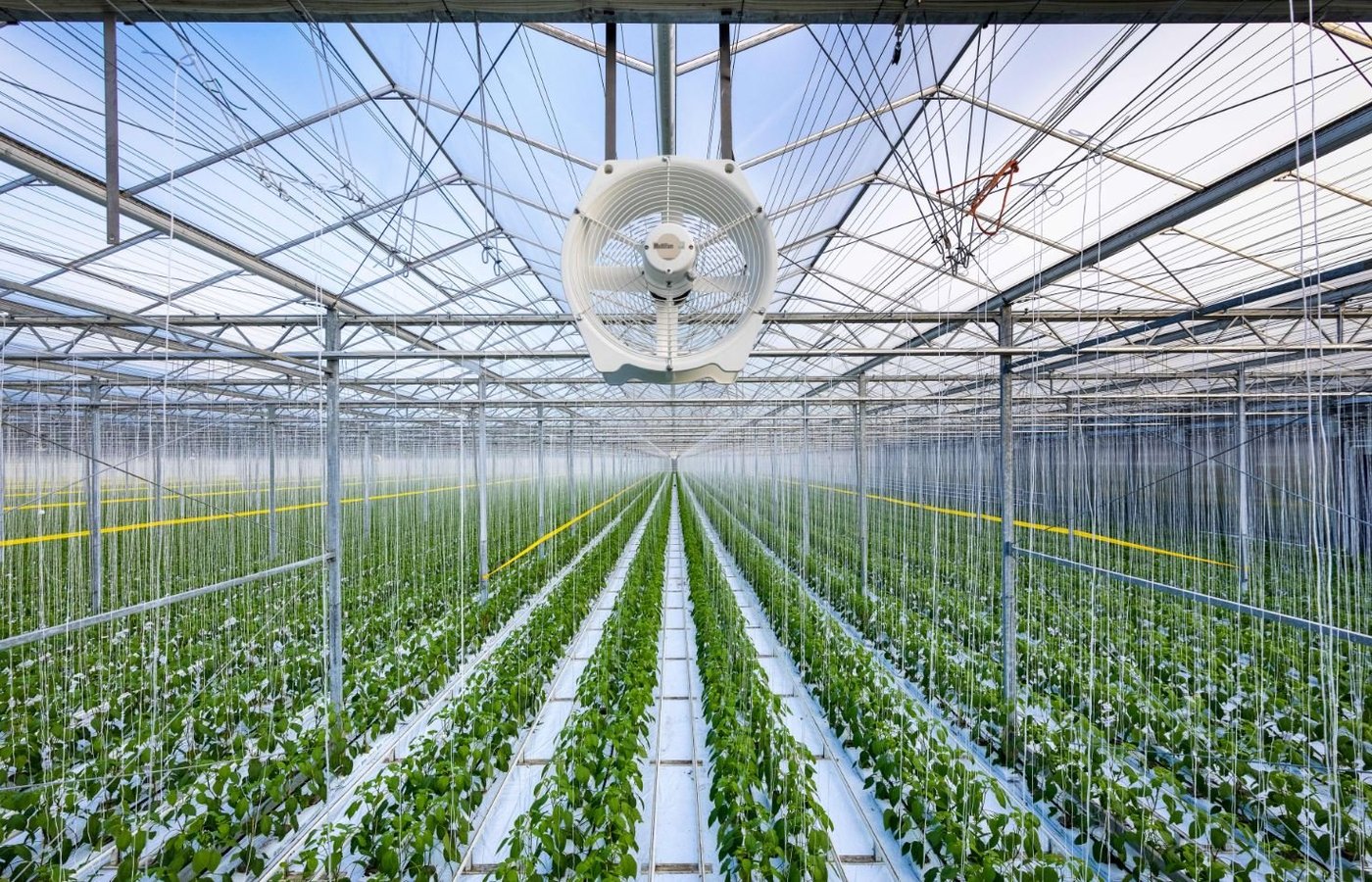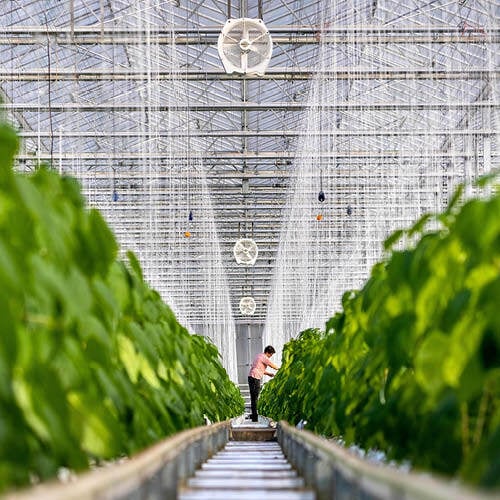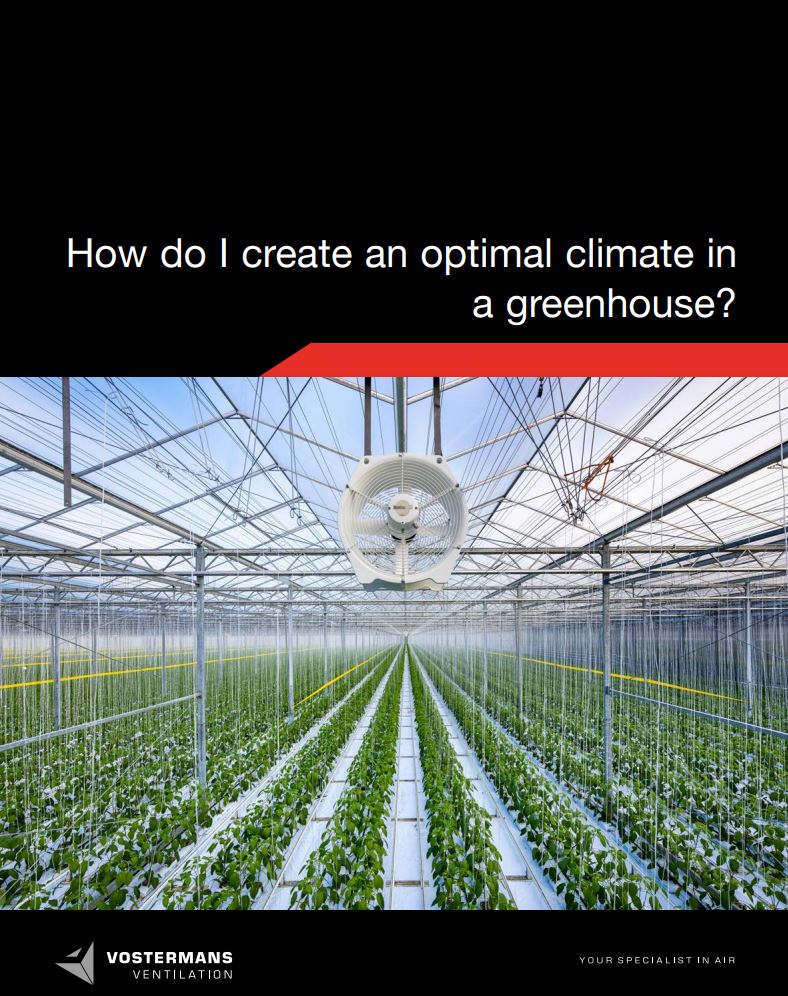Greenhouses allow crops to be protected from changes in weather conditions. In addition, greenhouses can create an ideal climate for any type of crop all year round. Regardless of whether it’s ornamental crops, vegetables, fruits or cannabis. An optimal greenhouse climate ensures healthier plants, better growth and more uniform crop development. Yet there are also risks. An uncontrolled greenhouse climate can damage the crop irreversibly. We will list the most important points to consider. However, first we go back to basics. Why is it actually so important to have fans in a greenhouse?
Why place fans in a greenhouse?
Circulation and ventilation prevent a dead microclimate in the greenhouse. A dead microclimate means that air movement no longer takes place and the evaporation of the plants stagnates. This causes familiar problems such as leaf damage and blossom end rot. In addition, the chance that the temperature drops below the condensation level in certain areas of the greenhouse is higher. This increases the chance of humidity-related diseases such as Botrytis. By moving the air in the greenhouse with fans, a continuous air flow is created throughout the greenhouse and between the plants. This allows plants to better release their heat and mixes humid areas between the plants with dryer air from above the plants. This continuous airflow between the plants is called an active microclimate. Because the air in the greenhouse is now actively mixed, a homogeneous climate is created. This creates the same growing conditions for the crop throughout the greenhouse. This provides significant benefits for business operations, such as in determining harvest times. But what are the main differences between air circulation and ventilation? And when do you apply each?
Air circulation in a greenhouse
With air circulation we are not talking about exchanging the air, but about putting air in motion. The main goals are to create an active microclimate for a healthy crop, and to create a uniform greenhouse climate for optimal operations. Using fans, there are generally 3 types of circulation methods: Horizontal, vertical and circulation using climate hoses.
Determining the number of fans
Example:
In the example, we use a greenhouse with a total volume of 160,000 m3. If we multiply this by a circulation rate of 3, we know that the circulation fans must move 480,000 m3 of air per hour


